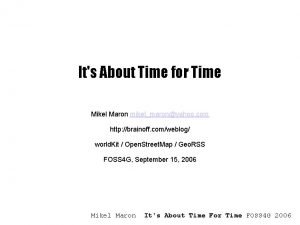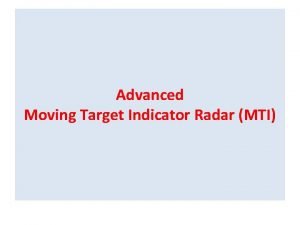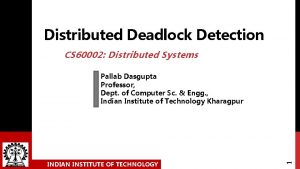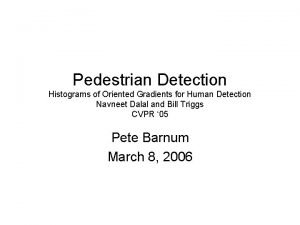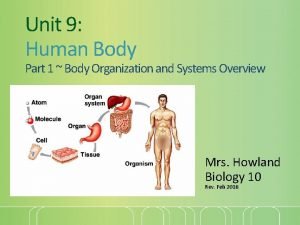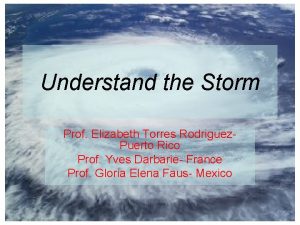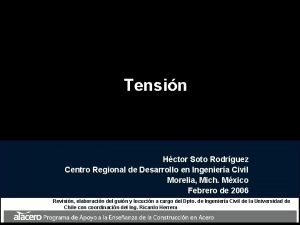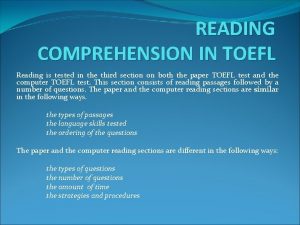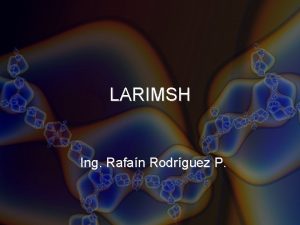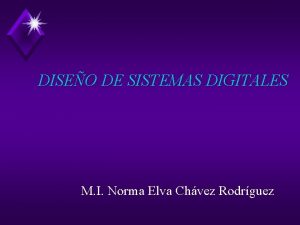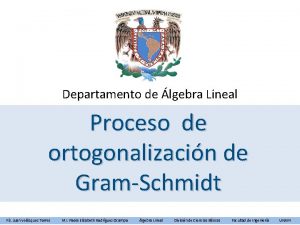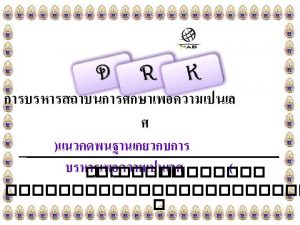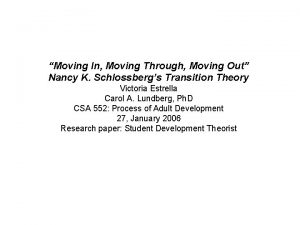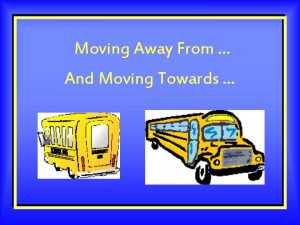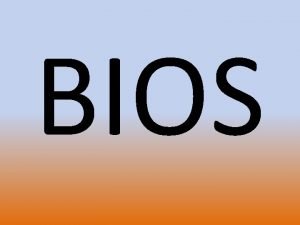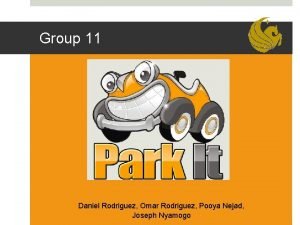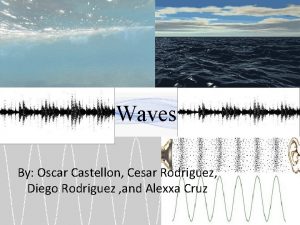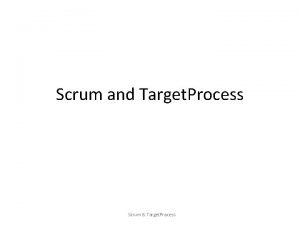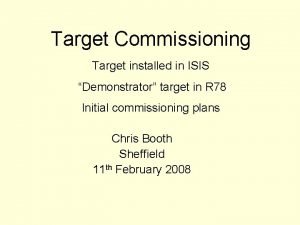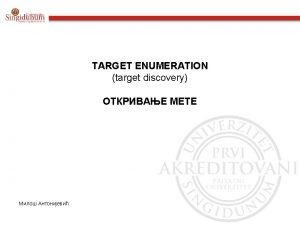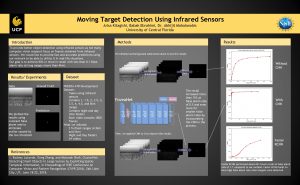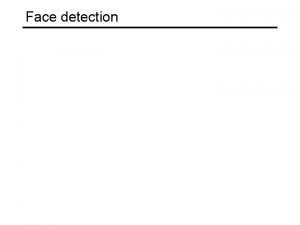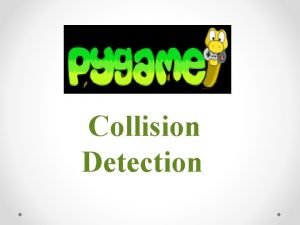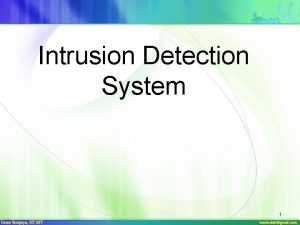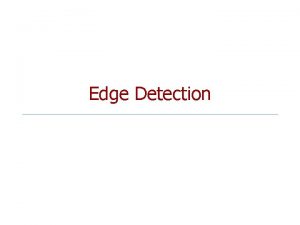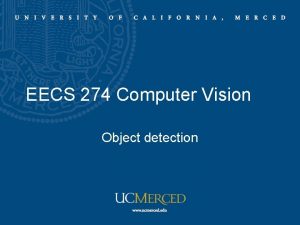Human Detection Mikel Rodriguez Organization 1 Moving Target

































- Slides: 33

Human Detection Mikel Rodriguez

Organization 1. Moving Target Indicator (MTI) n n Input Frame Background models Moving region detection Target chip generation Results Object Detection MTI Target Chips 2. Target Classification (Human Detection) n n n Target features Support vector machines Results Wavelet Features SVM Classifier Classification

Moving Target Indicator Moving target indicator (MTI) identifies moving objects which can be potential targets

MTI Motivation n Becoming increasingly important in military and civilian applications n To minimize human involvement Expensive n Short attention spans n n Computerized monitoring system n Real-time capability n 24/7

MTI Challenges n Different sensor modalities n LADAR, IR, EO n Targets with different dynamics n Small targets n Weather conditions n Illumination changes, shadows…

MTI Input Video Background Modeling Moving Target Detection Intensity Gradient models Background Subtraction dynamic update Targets Chips Position

Hierarchical Approach to Background Modeling n Pixel level n Region level n Frame level

Pixel Level Background Features n Intensity, heat index EO IR n Gradient n 2 D: magnitude, orientation Magnitude Orientation

Pixel Level Background Features n Intensity, heat index n Per-pixel mixture of Gaussians. n Gradient based subtraction n Gradient feature vector =[ m, dd]

Pixel Level Moving Region Detection n Mark pixels that are different from the background intensity model n Mark pixels that are different from the background gradient model

Region Level Fusion of Intensity & Gradient Results • For each color based region, presence of“edge difference” pixels at the boundaries is checked. Image Color based Gradient • Regions with small number of edge difference pixel are removed, color model is updated. Final

Frame Level Model Update n Performs a high level analysis of the scene components If more > 50% of the intensity based background subtracted image becomes foreground. Frame level processing issues an alert Intensity based subtraction results are ignored

Structure of the MTI Class MTI Background Connected. Components() Boundary. Edges() Set. Num. Gaussians() Set. Alpha() Set. Rho. Mean() Set. Weight. Thresh() Set. Active. Region() Get. Num. Gaussians() Get. Alpha() Get. Rho. Mean() Get. Weight. Thresh() Get. Active. Region() Object Chips Centroid() Object. Area() Height() Width() Set. Bounding. Box() Set. Rho. Location() Set. Centroid() Get. Bounding. Box() Get. Rho. Location() Get. Centroid() Is. False. Detection()

Results

Target Classification of objects into two classes: humans and others, from target chips generated by MTI

Challenges n Small size n Obscured targets n Background clutter n Weather conditions

Positive Negative Classifier Flow Training Support SVM Vectors Feature Extraction Wavelet MTI Chips Testing Decision

Wavelet Based Target Features Blurred Vertical Horizontal Diagonal

Feature Extraction n Apply 2 D Wavelet Transform n Daubechies wavelets n Apply Inverse 2 D Wavelet Transform to each of the coefficient matrices individually n Rescale and vectorize output matrices

Why Wavelets? n Separability among samples n Humans can be separated from cars and background Correlation using gray levels Correlation using gradient mag.

Why Wavelets? Person 11 - DB 3 Wavelet Correlation

Support Vector Machines (SVM) n Classification of data into two classes n N dimensional data. n Linearly separable n n If not transform data into a higher dimensional space Find separating N dimensional hyperplane

SVM Linear Classifier hyperplane equation N dimensional data point xi Sample distance to hyperplane

SVM Best Hyperplane? n Infinite number of hyperplanes. n Minimize ri over sample set xi n Maximize margin around hyperplane n Samples inside the margin are the support vectors

SVM Training Set n Let =1, A training set is a set of tuples: {(x 1, y 1), (x 2, y 2), …(xm, ym)}. n For support vectors inequality becomes equality n Unknowns are w and b

SVM Linear Separability n Linear programming, n Separator line in 2 D w 1 xi, 1+w 2 xi, 2+b=0. n Find w 1, w 2, b such that is maximized n Find w 1, w 2, b such that (w)=w. Tw is minimized

SVM Solution n Has the following form: n Non-zero i indicates xi is support vector n Classifying function is:

Classification Class Human Classification Training. Function Testing. Function Load. SVM() Read. Images() Read. Positive. Images() Read. Negative. Images() Assemble. Positive() Assemble. Negative() Assemble. Matrices() Extract. Features Train. SVM LIBSVM Convert. To. Gray() Apply. Wavelet. Filter() Apply. Inverse. Trans() Resize. Inverse() Vectorize. Inverse() Concatenate() Test. SVM LIBSVM

Classification Baseline Analysis n Run time for 3. 0 GHz dualcore, 2 GB RAM n Training: 276 training samples 8. 015 seconds n Testing: 24. 087 chips (25 by 25) per second n Classifier size n Depends on diversity of images n For 276 training samples of 25 x 25, classifier size is 1. 101 MB

Classification Baseline Analysis n Memory requirements n Requires entire set of support vectors n Current classifier

Experiments Vivid Dataset UCF Dataset

Results n Training set n 300 target chips n Testing n 3872 human chips n 5605 vehicle and background chips n Performance n 2. 4% false positive (others classified as pedestrians) n 3. 2% false negative (pedestrian classified as others)

Future directions n MTI n Detection by parts n Motion clustering n Classification n Various kernels for SVM n Better target features n n n Motion, steerable pyramids, shape features (height, width) Local wavelet coefficients Adaboost
 Mikel maron
Mikel maron Speed detection of moving vehicle
Speed detection of moving vehicle Moving target indicator radar block diagram
Moving target indicator radar block diagram Mti radar vs pulse doppler radar
Mti radar vs pulse doppler radar Primary target market and secondary target market
Primary target market and secondary target market Control organization for distributed deadlock detection
Control organization for distributed deadlock detection Histograms of oriented gradients for human detection
Histograms of oriented gradients for human detection Histograms of oriented gradients for human detection
Histograms of oriented gradients for human detection Process organization in computer organization
Process organization in computer organization Block arrangement essay
Block arrangement essay Levels of organization in the human body
Levels of organization in the human body Human resource management in retail management
Human resource management in retail management Human service organization
Human service organization Levels of structural organization in the human body
Levels of structural organization in the human body Functional organization of human body
Functional organization of human body Elizabeth torres rodriguez
Elizabeth torres rodriguez Hector soto rodriguez
Hector soto rodriguez Rodriguez vector
Rodriguez vector The florida keys are a beautiful chain
The florida keys are a beautiful chain Laura esther rodríguez dulanto biografia
Laura esther rodríguez dulanto biografia Larimsh productos
Larimsh productos Evelyn martinez rodriguez
Evelyn martinez rodriguez Dr angel rodriguez-chevres
Dr angel rodriguez-chevres Artista gallego
Artista gallego Norma elva chavez rodriguez
Norma elva chavez rodriguez Fis. juan velazquez torres
Fis. juan velazquez torres Susan rodriguez message
Susan rodriguez message Colegio beato carlos manuel rodriguez
Colegio beato carlos manuel rodriguez Fray marcos rodriguez robles
Fray marcos rodriguez robles Paula rodriguez uil
Paula rodriguez uil Leonardo rodriguez medina
Leonardo rodriguez medina The rest of daniel
The rest of daniel Dr daniel rodriguez
Dr daniel rodriguez M.c. ranulfo rodriguez sobreyra
M.c. ranulfo rodriguez sobreyra
